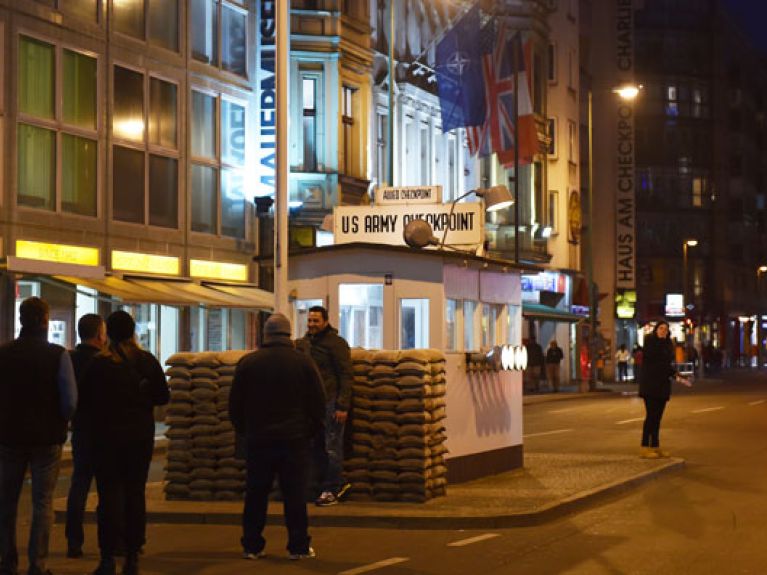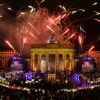Places of remembrance
A dossier on the 25th anniversary of the fall of the Wall. In Part 9, we will show where the period of division and the peaceful revolution are brought to life.

In and around Berlin:
Berlin Wall Trail
The over 160-kilometre-long cycle and hiking path runs along the former GDR border installations around the former West Berlin.
Eastside Gallery
Artists from all over the world have transformed the longest surviving piece of the Berlin Wall into a large open-air gallery.
Berlin Wall Memorial
The memorial site stretches 1.4 kilometres along the Bernauer Strasse, which is an especially poignant symbol of the former division of the city. This is where some 500 people attempted to escape to the West.
www.berliner-mauer-gedenkstaette.de
Palace of Tears
Dramatic scenes took place when family members from the West were welcomed or seen off in the terminal of the border crossing at Friedrichstrasse Station.
www.hdg.de/berlin/traenenpalast
Checkpoint Charlie
This is perhaps the most famous border crossing between the former Soviet and US sectors. It is situated in the heart of Berlin.
White Crosses
The crosses on the bank of the Spree near the Reichstag building are a memorial to the GDR citizens who died trying to escape.
Memorial for Chris Gueffroy
Chris Gueffroy was shot dead at the Wall in the night of 5 to 6 February 1989. The 20-year-old was the last victim of the “shoot to kill order”.
Tunnel 57
Several times GDR citizens attempted to dig tunnels to the West. Tunnel 57 was the most successful project; it enabled 57 people to escape.
Marienfelde Refugee Center
Some 1.35 million refugees and resettlers from the GDR arrived here between 1953 and 1990.
www.notaufnahmelager-berlin.de
Hohenschönhausen Memorial
Thousands of political prisoners were detained in the main remand prison of the Ministry for State Security (Stasi).
Glienicke Bridge
The border between East and West ran through the middle of the bridge over the Havel. During the Cold War it was the site of several exchanges of spies. Later it became known as the Bridge of Unity.
In Mecklenburg-Western Pomerania and Lower Saxony:
Naval Bunker at Kap Arkona
The existing bunker installations were upgraded during the GDR era as a command centre for the People’s Navy.
Baltic Border Tower in Kühlungsborn
Many GDR citizens attempted to escape across the Baltic Sea. However, the maritime border was also heavily guarded.
Friedland Border Transit Camp
After the Second World War the camp served as a reception centre for refugees, expellees and homeless persons. Later it became the reception point for GDR refugees.
www.grenzdurchgangslager-friedland.niedersachsen.de
In Saxony and Saxony-Anhalt:
Nikolaikirche
The church in Leipzig is considered the starting point for the “peaceful revolution”. This is where people organised prayers for peace and where the Monday Demonstrations began.
Brockenhaus
The Ministry for State Security (Stasi) operated a listening post on northern Germany’s highest mountain.
www.nationalpark-brockenhaus.de
In Hesse, Thuringia and Bavaria:
Point Alpha
This place epitomises the Cold War: in addition to a former US observation post, you can see parts of the former GDR border installations.
Mödlareuth
Mödlareuth was divided during the GDR era: the Wall ran through the centre of the village. That’s why Americans called it “Little Berlin”.

